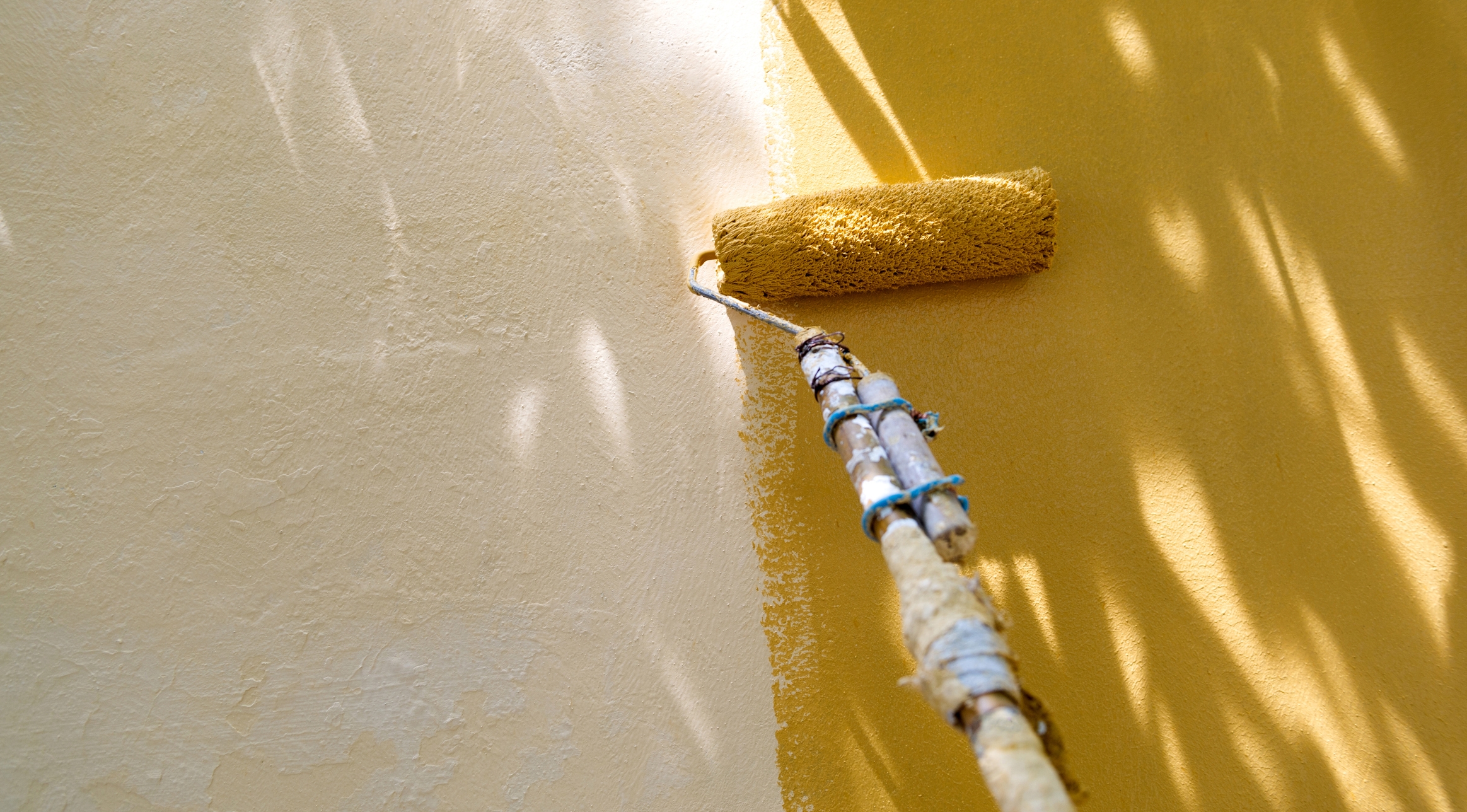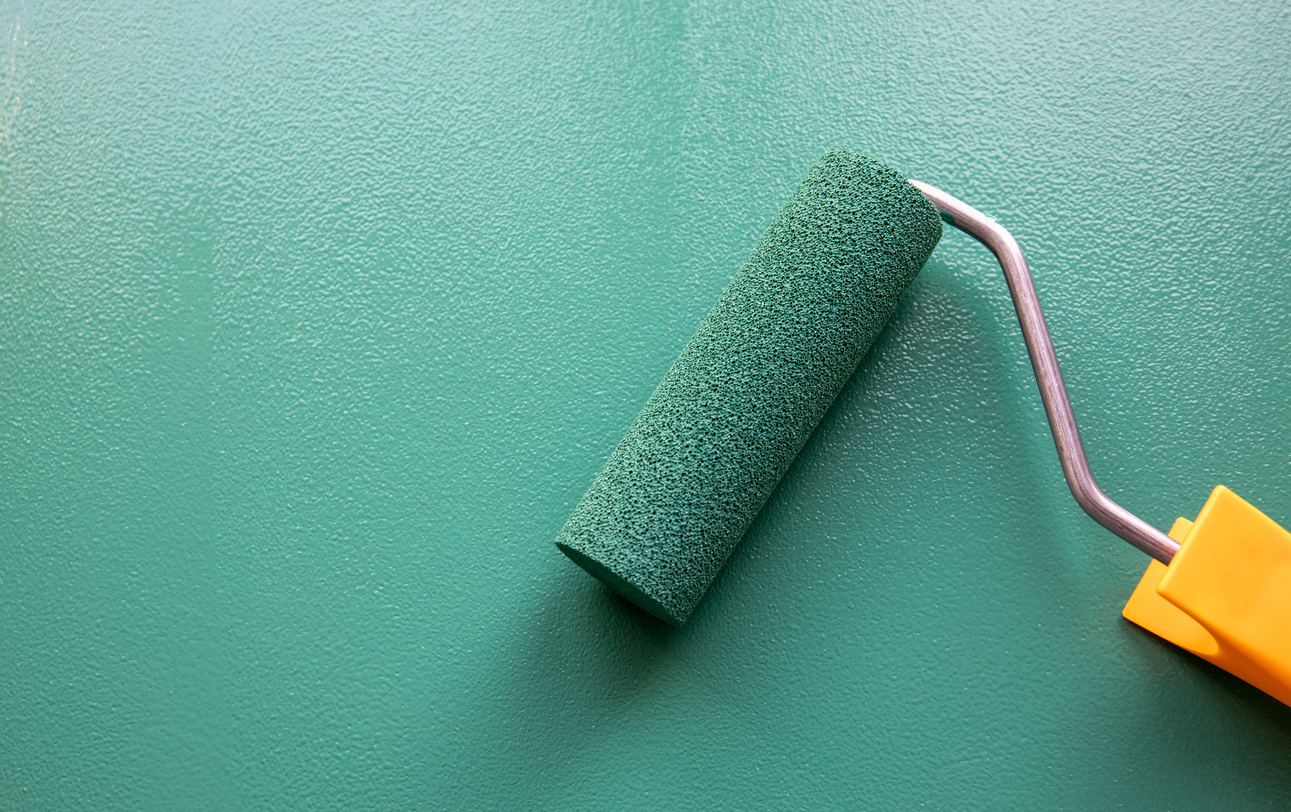The first line of defense from the effects of outside heat, humidity, moisture, pests, and pollution for your Pleasanton home is its exterior paint. Applying high-quality exterior paints will help you ensure the durability and protection of your home for many years to come. But what if the paint begins to fade, crack, chip, and peel? It will compromise the paint’s ability to protect the exterior surfaces of your home.
Experts recommend that you paint your home every 5 to 10 years, depending on various factors: surface type, level of surface prep work, paint quality, or wear and tear. But you don’t need to wait for any signs of wear and tear before you repaint your house. It’s a preventative solution to avoid future damage.
How Painting Protects Your Home’s Exterior Surfaces
Let’s take a look at how paints preserve your home’s exterior surfaces:
1. It protects the exterior from the weather elements
Temperature fluctuations can cause paint to expand in the heat and contract in the cold, leading to cracks in paint over time. As the wood or other material under the paint expands and contracts, it will lead to peeling paint.
Not to mention that any form of precipitation, such as rain, sleet, or snow, getting under the exterior paint can cause potential issues. If left unaddressed, moisture can seep into the material underneath the paint, causing moderate to severe damage.
The sun’s UV rays often cause exterior paint to fade quickly or become chalky. Vivid colors like red, green, yellow, and blue fade faster than neutral colors, especially in direct sunlight. The sun can also dry out the wood underneath, causing it to warp, distort, and possibly crack.
We recommend applying only high-quality paints over a well-prepared surface to withstand temperature fluctuations and extreme weather conditions.
2. It protects the house from mold, mildew, and rot
Mold and mildew are more than just an eyesore to your home’s siding. They can also cause severe damage to wood if left untreated.
Mold, mildew, and wood rot are caused by moisture. If wood is particularly unprotected, moisture can sit on and under its surface. If moisture starts to seep in, wood rot can form as well. You may not notice wood rot because it usually sets in and spreads underneath the surface. It would only become visible once it appears on the surface, leading to further decay of your siding and compromising the integrity of your home’s structure.
Fortunately, mold, mildew, and wood rot can be completely preventable with proper and regular maintenance, such as painting. A coat of premium paint on a well-prepared exterior surface is a barrier against moisture.
3. It protects the house from pests
Bugs and other insects are unwelcome visitors to your home. They constantly try to find ways to sneak inside the siding as a refuge from the heat, cold, or predators. They eat away wood that can compromise your home’s structure. These pests can be challenging as they are quite tricky to eliminate.
Check the surface first for cracks, holes, and gaping joints to prevent pests from crawling inside and underneath the wood. You want to make sure insects are inhabiting inside these cracks and holes. If there are pests inside, treat the affected areas with spray insecticide or have a pest control professional deal with the infestation.
Fill these cracks and holes with compound and caulk joints around doors and windows (if needed), and the excess compound, prime, and then paint. Filling and caulking can seal any small gaps that bugs and other insects like to find.
Even the color of the paint can play a role in repelling pests. There are specific paint colors that pests are attracted to, as well as colors they avoid. As bugs see colors on the UV spectrum, they cannot register hues of blue and green. This may be why some homes are painted with shades of green or blue.
On the other hand, painting your house white, yellow, or orange can deter certain insects and animals, such as birds and mosquitoes. If a pest problem exists in your area, using specific colors for your home’s exterior surfaces to turn off potential intruders is a good idea. Your particular solution against pests may be as simple as choosing a new color for your home.
4. It enhances energy efficiency
To regulate the temperature in your house, you should not rely only on your heating and cooling systems. Do you know that high-quality exterior paint can reflect significant amounts of UV rays and infrared radiation, which reduces the heat absorbed by your home? This reflective property can help keep the interiors cooler, reducing the burden on air conditioning systems and, as a result, lowering energy costs.
On the other hand, a well-applied layer of exterior paint can also help retain heat during colder months. Paints with specific reflective compounds are recommended for their superior ability to manage heat transfer, which not only extends the life of the paint itself by reducing expansion and contraction cycles but also contributes to a more stable and comfortable indoor environment.
5. It extends thelifespan of the siding
The siding of a home serves as its protective barrier, so it is susceptible to wear and tear if not properly maintained. Repaint it with high-quality paint to prevent common issues like cracking, peeling, and moisture penetration.
Adding a fresh coat of paint can add an extra layer of protection against environmental factors that usually cause the siding to deteriorate. It also prevents the growth of mold and mildew, which are notorious for breaking down exterior materials.
For best results, it is best to choose paints specifically formulated for the siding material of your home to ensure longer-lasting protection.
6. Itprotects against corrosion and rust
If your house has metal components, such as gutters, downspouts, and metal sidings, you need to give them a proper coat of paint to prevent rust and corrosion. These elements are particularly vulnerable to oxidation when exposed to moisture and air without protection.
Specialty paints with rust inhibitors are a great choice – they provide a barrier that prevents the chemical reactions leading to corrosion. Regularly inspect and touch upon these metal parts to avoid costly replacements and repairs down the line.
7. It seals out moisture
Moisture can damage a home and weaken its structure. A good paint job acts like a shield that blocks rain and moisture from entering the walls. This is especially important in places where it rains a lot or it’s very humid, as it stops water from damaging the walls and causing issues like mold or rot.
Before painting, it’s important to fill any cracks or gaps to strengthen this shield. Using a special type of paint called elastomeric coating can be even more effective because it’s thicker and stretches better, providing extra protection against moisture.
How to Paint Your Home’s Exterior
Any DIY painter can paint a home’s exterior. Provided that you have the right tools follow proper procedures and safety measures – and perhaps have lots of time to spare – you can end up with a good finish. Here’s how you paint your home’s exterior:
1. Prepare the surface
- Begin by cleaning your walls thoroughly to remove any dirt, debris, or mildew. Use a garden hose for lighter cleaning or a pressure washer for more soiled areas. Be sure to adjust the pressure settings to avoid damaging the siding.
- Allow the surface to dry completely, which can take from a few hours to a full day, depending on weather conditions.
2. Repair damages
- Inspect the exterior for any cracks or holes and repair these imperfections. Use a spackle knife to apply a joint compound, spackle, or an epoxy filler suitable for outdoor use.
- Allow the filler to dry per the manufacturer’s instructions—usually overnight.
- Once dry, sand the area with a medium-grit sanding block to create a smooth, even surface that will not show through the paint.
3. Remove old paint
- Scrape off peeling and loose old paint with a paint scraper. For larger flaking areas, use a medium-grit sanding block to smooth out rough edges.
4. Seal gaps and joints
- Caulk any gaps or joints, especially around doors and windows, to prevent moisture and air from penetrating through. This also helps to improve the insulation of your home.
- Use a high-quality exterior caulk for best results, and smooth it out with a caulking tool or your finger to ensure it blends well with the surrounding surface.
5. Prime the walls
- Applying a primer is essential, especially if you’re making a drastic color change (like changing a bright color or painting from dark to light) or painting over raw surfaces. Primer helps achieve a uniform finish and makes the topcoat more durable.
- Choose a primer suited for the exterior material of your house and the type of paint you’re using.
6. Protect areas not being painted
- Use painter’s tape to cover windows, doors, and trim. Cover plants, bushes, and outdoor furniture with drop cloths or plastic sheeting to protect them from drips and spills.
7. Painting
- Start painting from the top down, starting with the gutters and eaves and working your way down to the main surfaces.
- Use a brush for smaller, trickier areas and a roller for large wall sections. For very high areas, use paint to provide an even coat.
- Apply at least two coats of exterior paint for even coverage and long-lasting protection.
Call Custom Painting, Inc. to Protect and Beautify Your Home
Repainting the exterior of your home every few years is always a good idea, whether for remedial or preventative reasons. While you may have done a DIY paint job before, it would be better to leave the exterior painting job to professional painters. You can always tell the difference when a professional painting contractor does the work.
If you live in Dublin, CA or anywhere else in the Bay Area and want a quality exterior paint finish, you can get free quotes from Custom Painting, Inc. Instead of struggling to get the job right and ending up with a subpar finish, our top-notch paint experts will offer a more economical but quality exterior paint service. We use only the best exterior paints in Dublin products, tools, and equipment to deliver an excellent finish with long-lasting results. Call us now at 925-294-8062 or send us an estimate request online.




